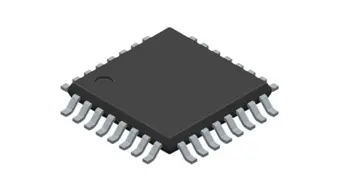What is a Microcontroller?
Microcontrollers are small, standalone computers used to manage operations in electronic devices. They can be found in a wide range of gadgets, including as workplace equipment, robotics, home appliances, cars, and other technology. Due to their employment in powering and controlling CubeSats, tiny satellites used for scientific study and teaching, microcontrollers have recently assumed a greater role in space exploration.

Microcontroller Components
A processor: This is the microcontroller’s central processing unit. It is in charge of carrying out commands and managing the other microcontroller parts.
Memory: Read-only memory (ROM) or random-access memory (RAM) are two common types of memory found in microcontrollers. The firmware of the microcontroller, which is the program that governs the microcontroller’s operation, is kept in ROM. Data that is being processed by the microcontroller is kept in RAM.
Peripherals: Input/output ports, timers, and communication interfaces are just a few examples of the peripherals that microcontrollers frequently have. The microcontroller can communicate with the outside world thanks to these peripherals.
Microcontrollers Features
- These pins, known as general-purpose input/output (GPIO) pins, can be set up as inputs or outputs and are used to read sensors and external signals or to drive external devices like motors and LEDs.
- The analog-to-digital converter (ADC) transforms analog signals into understandable digital data for the processor.
- Digital-to-analog converter (DAC): This produces analog signals that the processor may output from digital data.
- Interrupts can be generated at regular intervals using programmable interval timers (PIT).
- Using pulse-width modulation (PWM), power converters, resistive loads, and motors can be managed.
- Data can be received and sent over a serial line using a universal asynchronous receiver/transmitter, or UART.
- I2C is a digital communication standard that can be used to interact with other components on the same board.
- Another digital communication protocol that can be used to talk to other components on the same board is Serial Peripheral Interface (SPI).
- A common communication protocol that can be used to connect devices to a computer is called Universal Serial Bus (USB).
- Connecting devices to a local area network (LAN) can be done using the networking protocol Ethernet.
How does a Microcontroller Work?
Instruction retrieval: An integrated circuit is created with a specific use in mind. We are unable to demand that IC carry out a specific procedure. However, because a microcontroller can be programmed, we may flash the desired program onto it to do a number of tasks.One instruction at a time is taken from program memory by the CPU. The instructions are stored in a series of bytes, which the CPU reads one at a time.
Decoding guidelines: The CPU decodes the instructions it has fetched. The bytes must be converted into instructions that the CPU can understand in order to accomplish this.
Executing instructions: The decoded instructions are subsequently carried out by the CPU. This requires carrying out the instructions’ specified tasks.
Accessing memory: The CPU may require memory access to read or write data. The CPU can access memory via a set of instructions.
Accessing I/O peripherals: Additionally, the CPU might need to use I/O peripherals. Devices known as I/O peripherals enable communication between the microcontroller and the outside environment. To access I/O peripherals, the CPU has a set of instructions at its disposal.
Generating output: It’s possible that the CPU must produce output for I/O peripherals. This output can be used to convey information to other devices or operate other devices.
Microcontrollers Applications in space exploration
The utilization of microcontrollers in space exploration finds its roots in several compelling factors. Their lightweight and compact nature make them ideal for CubeSats, ensuring efficiency. Furthermore, microcontrollers exhibit remarkable resilience in the challenging space environment, capable of withstanding radiation, extreme temperatures, and delivering unwavering reliability.
Among the pivotal roles microcontrollers play in space exploration, one of the most prominent is their involvement in attitude control. Maintaining a spacecraft’s correct orientation falls under the purview of attitude control, with microcontrollers overseeing the management of thrusters responsible for adjusting the spacecraft’s orientation.

The different sensors used on spacecraft are likewise managed by microcontrollers. These sensors are capable of measuring things like radiation levels, pressure, and temperature. The information gathered from these sensors is utilized to check the spacecraft’s health and functionality.
Problems with Microcontroller Use in Space
Engineers must overcome a number of difficulties while creating and utilizing microcontrollers in space. As we just discussed, one difficulty is the hostile atmosphere of space. Radiation, severe temperatures, and other environmental risks must not harm microcontrollers.
The limited power source that spaceships have is another issue. Microcontrollers need to be built with a high level of power efficiency.
Engineers must also take into account the spacecraft’s limited bandwidth, which necessitates highly effective communication between microcontrollers and the base station.
Choosing the Right Microcontroller for Space Projects
There are several things to take into account while selecting a microcontroller for a space project. These elements include the microcontroller’s dimensions, weight, power requirements, and radiation tolerance. Additionally, you should think about the sensors and software that will be installed on the microcontroller in your spacecraft.
Conclusion
The use of microcontrollers in space exploration is crucial. They are employed for data collection, health monitoring, and spacecraft control. When creating and utilizing microcontrollers in space,engineers encounter a variety of difficulties, yet the advantages of doing so greatly outweigh the difficulties.

